This post identifies field marks that confirm a Green Comma (Polygonia faunus) identification using reference photos. There are four species of Comma butterfly (Green, Hoary, Oreas, Satyr – https://imagewildlife.com/spring-is-coming-get-ready-for-the/ ) here in the Pacific Northwest. The four are similar in appearance and require a discriminating look to separate them at times. Two composite photos are below illustrating light vs. darker looks of both the upper wing and under wing.

Green Comma Upper Wing
Both butterflies pictured in the above composite are Green Comma. The one on the left is a darker tone (most likely to encounter) while the right one is lighter in tones with the same underlying pattern. Remember that time of year, distance, wear and tear, sun vs. shade can impact what a butterfly looks like in the moment. This variability is normal and encountered regularly no matter the butterfly species. Color and pattern remains much the same. Note the numbered annotations. These selected markings are important for establishing ID for a Green Comma.
Diagnostic Field Mark
The most important markings are within the blue polygon labeled #3. Note the wide dark brown/blackish band containing small golden spots/dashes. The dark band somewhat muted on the lighter toned Green Comma, but the spots and dashes just like the other pictured Green Comma. All four Comma species have a different and diagnostic color/pattern here.
Supportive Field Marks
Markings #1 and #2 are black/dark brown spots on the fore wing and hind wing respectively. Importance of these markings in identification varies from author/field guide. Glassberg (2001) felt both markings were important in identification; Pyle (2002) did not mention them in descriptions; Brock and Kaufman (2003) point out #2 marking as key field mark and finally Glassberg (2017) does not mention either marking as key for ID. It appears that they are now not considered diagnostic, but they are supportive evidence. Glassberg (2001) summed up that the two markings were valuable in eliminating consideration of other comma species as potential Green Comma identification.
Marking #1 is usually a pair of spots, a larger one topped by a smaller one. The bottom marking is always present on Green Comma, but the top marking may not be present or indistinct (see the right photo of composite) on some individuals. Marking #2 is similar. Green Comma usually has a central hind wing dark spot. At times it is indistinct, but there. Compare the photos in the above composite for a visual.
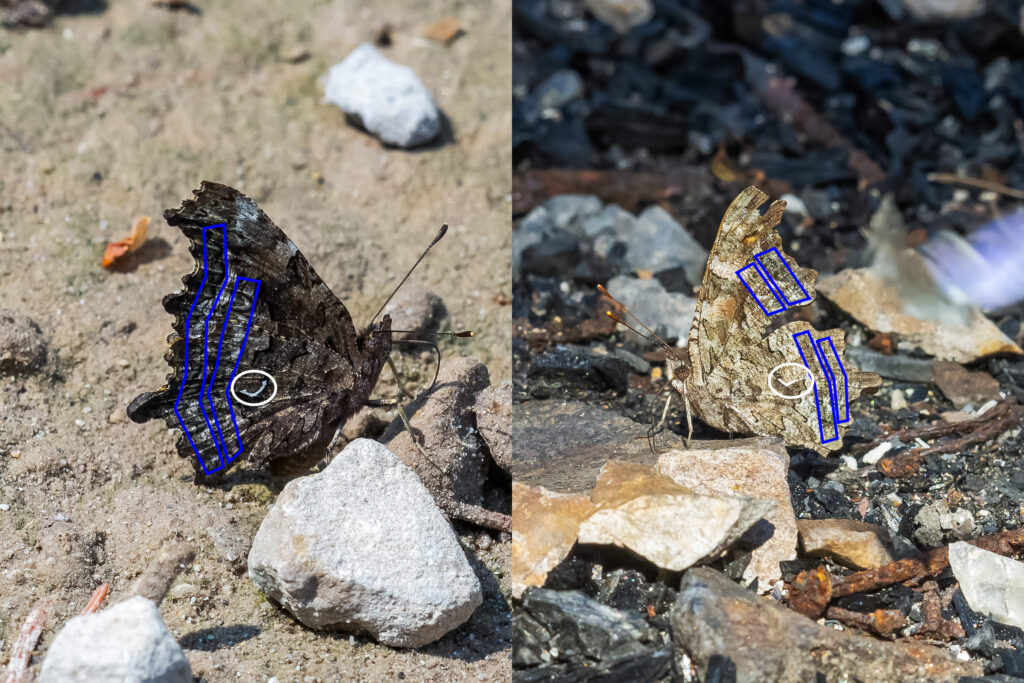
Green Comma Under Wing
Look at two features of the underwing to make a positive Green Comma identification. First, verify a white “comma” (annotated by the white circle in the above composite image) roughly in the middle of the hindwing. Note the comma is orientated horizontally unlike a grammatical usage. This certifies that the butterfly you are observing is definitely a comma butterfly (Polygonia genus). Secondly, note the blue polygons highlighting the submarginal and postmedian areas of the fore and rear under wings.
Diagnostic Field Mark
Inside the blue polygons are a series of irregularly shaped green spots forming two different lines. Most of the time this spotting is obvious as seen in the left image of the above composite. Other times the spotting is less obvious (right image of composite). This variation is normal. Overcome challenge by close, extended views or photographs. The green spotting is diagnostic for Green Comma. Two of three other comma species (Satyr and Oreas Comma) have no spotting at all, while a third has fewer chartreuse colored spots (Hoary Comma).
Skills Quiz
Practice your newly acquired Green Comma identification skills by taking the ten question quiz below. Right click on individual quiz image and open in new browser tab for larger viewing image.
References
Brock, J. & Kaufman, K. (2003). Kaufman Field Guide to Butterflies of North America. New York, NY: Houghton Mifflin Company.
Glassberg, J. (2001). Butterflies through binoculars: The West A field guide to the butterflies of western North America. New York, NY: Oxford University Press.
Glassberg, J. (2017). The Swift Guide to Butterflies of North America. Princeton, NJ: Princeton University Press.
Pyle, R. M. (2002). The Butterflies of Cascadia. Seattle, WA: Seattle Audubon Society.

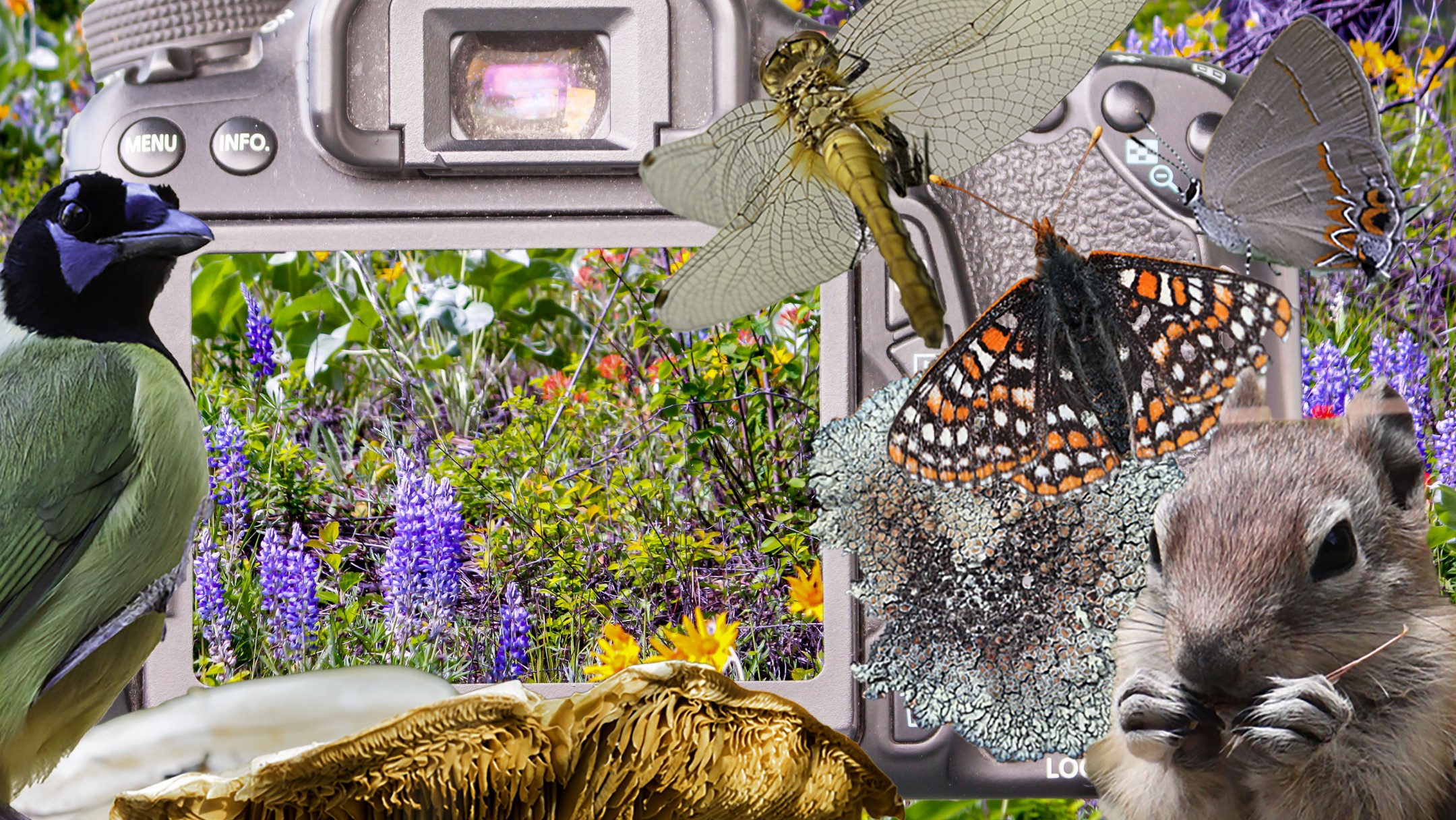
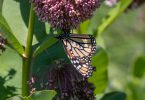
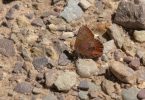

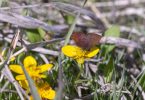
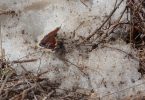
Awesome https://is.gd/tpjNyL